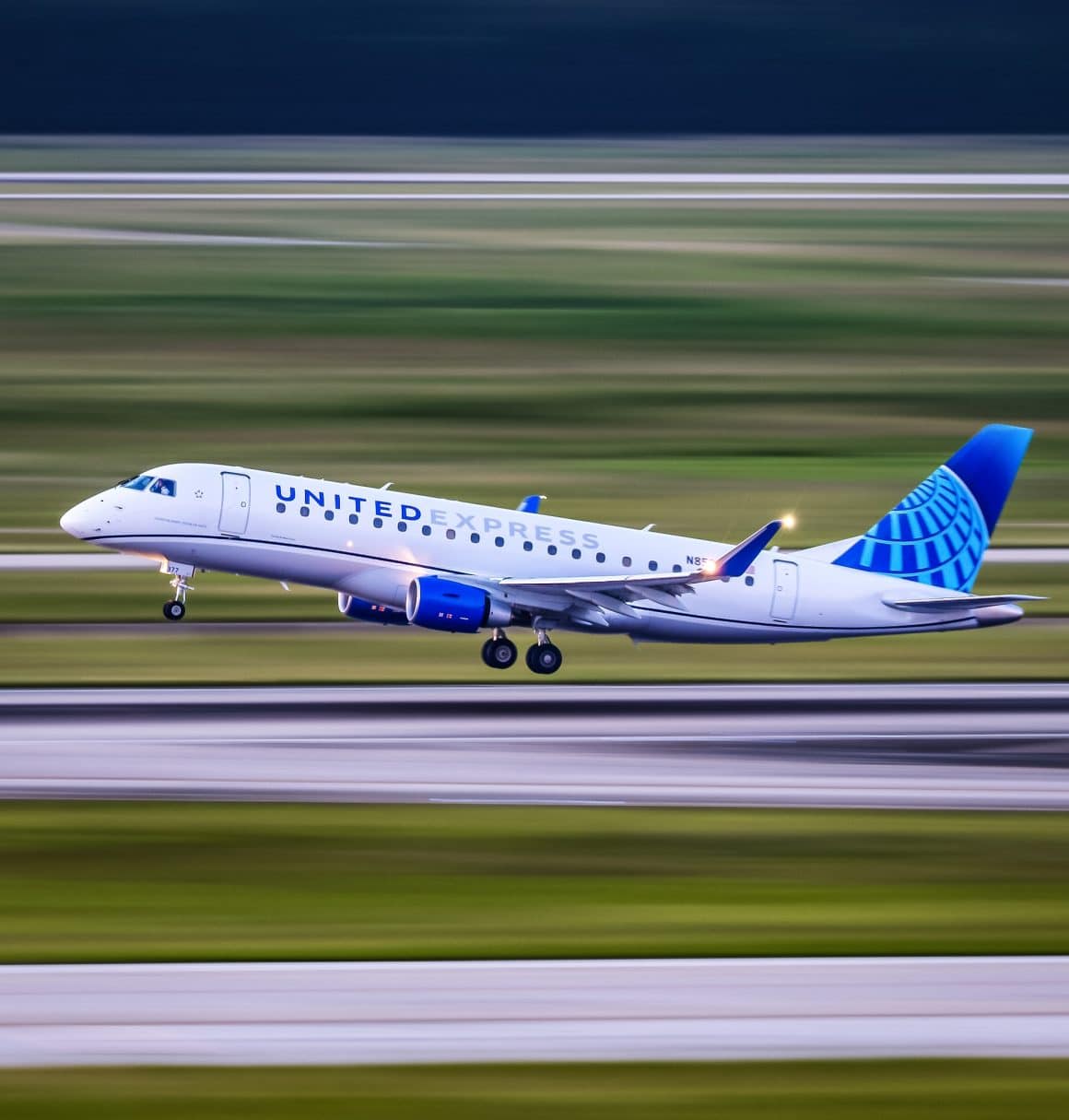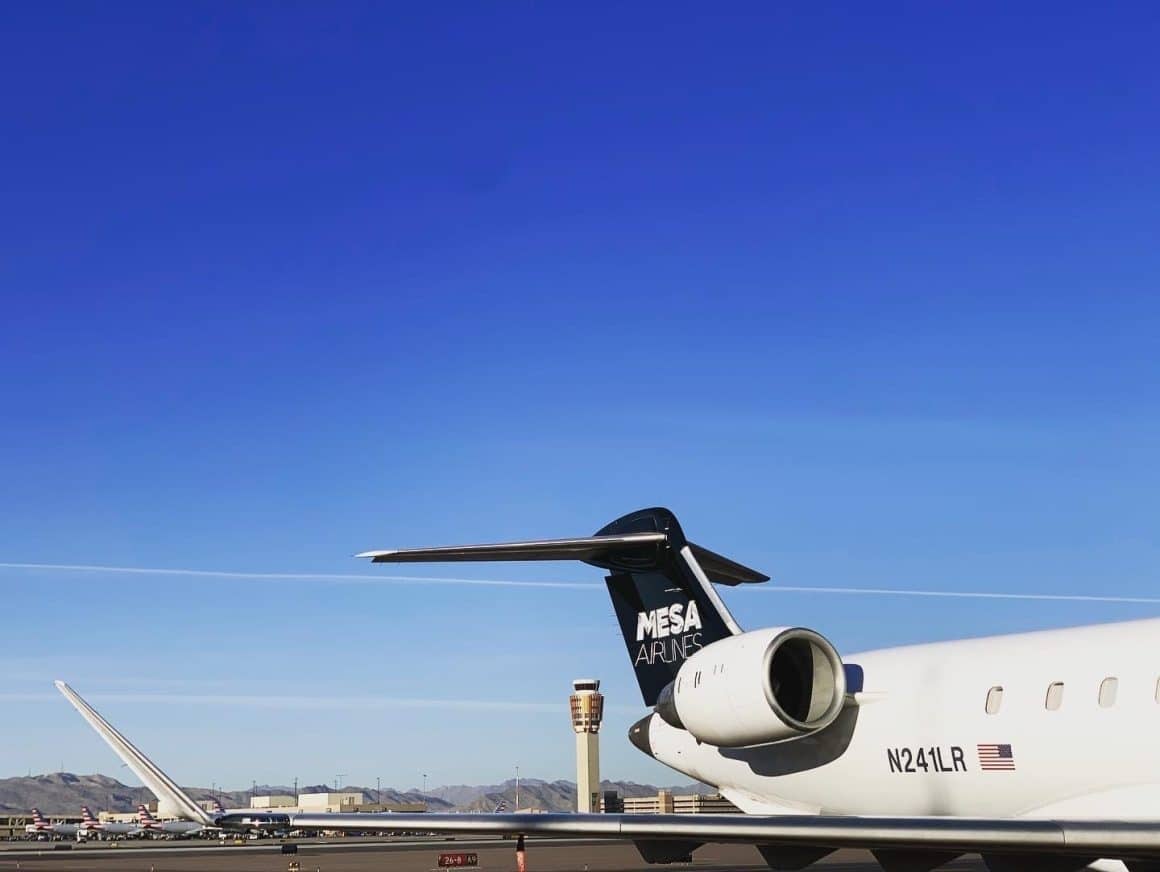Late last month, Phoenix-based regional carrier Mesa Airlines announced the purchase of 29 Pipistrel Alpha Trainer Pro aircraft, with options for 75 more. The aircraft will be the workhorse of Mesa’s Pilot Development Program (MDP), a specialized training program designed to help pilots with a commercial license quickly – and cost-effectively – reach the FAA-mandated 1,500-hour minimum.
The Alpha Trainer is a two-seat, high-wing training aircraft. Designed with a carbon fiber fuselage, a Kevlar reinforced cabin, and a full airframe ballistic parachute, it is touted as a safe, efficient, and low-cost option for flight training and time building. Mesa plans to deploy the aircraft at Inverness Airport (INF) in Citrus County, Fla., this October. The program will eventually expand to Phoenix as additional Alpha Trainer Pros come online over the next year.
A Dire Need for Pilots

Mesa’s Pilot Development Program aims to help combat the dire need for pilots while simultaneously providing cadets with a direct path to a long-term career.
AvGeekery spoke with Mesa Chairman and CEO Jonathan Ornstein, who offered a bleak assessment of the state of the industry.
“The pilot shortage could become a permanent feature of the airline industry if we don’t get more aviators into the system,” said Ornstein. “It is basic math. If there aren’t enough trained pilots, customers suffer from loss of service and high-ticket prices.”
Indeed, airlines have already been forced to raise ticket prices and eliminate or reduce service to many smaller cities. Government statistics paint a damning picture: 14,500 new pilots are needed annually. The US is producing just 6,335. More than 8,000 – or 56 percent – pilot jobs are currently unfilled.
Even unprecedented rises in regional pilot salaries have been unsuccessful in retention efforts. Mesa recently raised their first officer hourly rate to $100 per hour – an astonishing 118 percent jump.
However, Ornstein acknowledges it’s not really about the money.
“Some of the happiest pilots I know were those flying 19-seaters in the Rockies, and some of the unhappiest are flying 777s making $350K per year,” Ornstein said. “It’s not just about the money. I think there’s a lot more that goes into it.”
How Did We Get Here?

A combination of factors has brought the industry to this point. More stringent training requirements and a wave of early pilot retirements due to COVID-19 have contributed to the pilot shortage. The crisis disproportionately affects regional airlines because their pilots are moving to the major carriers to fill vacancies there. And there are not enough incoming regional pilots to replace those that move on.
The unfortunate reality is that becoming a pilot in the United States is simply unattainable for some – particularly for minority and other disadvantaged communities. Becoming a pilot is already expensive. Then, add in 1,500 hours of flight time the Federal Aviation Administration (FAA) requires for pilots to earn their Airline Transport Pilot (ATP) certificate, and the cost becomes exorbitant.
It wasn’t always like this, though.
Following an investigation into the deadly 2009 Colgan Air commuter crash near Buffalo, New York, the FAA raised the minimum flight time from 250 to 1,500 hours. Although the cause of the accident was determined to be pilot error, the move to increase the minimum hours was controversial, especially considering both pilots in the crash had attained more than 1,500 hours of flight time.
More than a decade later, the United States is still the only country to have implemented such stringent requirements for ATP certification. The mandate remains controversial to this day. A recent attempt by Republic Airlines to persuade the government to reduce the 1,500-hour minimum to 750 failed.
Ornstein doesn’t mince words when it comes to the 1,500-hour rule.
“We strongly believe that 1,500 hours is unnecessary,” he told AvGeekery. “It’s no worse than flying a pipeline or towing a banner. If people get a commercial license, then they should fly commercially – just like Air France, JAL, and every other airline in the world. This is an hours-building exercise, not a training exercise.”
Ornstein believes politics are behind the mandate.
“It’s not justified and lacks data,” said Ornstein. “There’s not one shred of evidence that supports 1,500 hours has made it safer – especially considering the rest of the world requires so much less.”
Mesa is Doing Something About It

As a 42-year-old regional carrier, Mesa Airlines has survived countless challenges. But, until recently, there has always been a fresh supply of pilots.
Seeing the writing on the wall, Mesa took matters into its own hands and launched the Pilot Development Program in an effort to produce great pilots quickly. It is a way to support new pilots and address the airline’s needs. New pilots will receive training in an expedited manner and with no out-of-pocket costs.
The program works like this: commercially-certified pilots can log up to 40 hours of flight time weekly at $25 per hour, fully financed with no interest. Once cadets reach the 1,500-hour threshold, cadets can take a position in one of Mesa’s regional jets or 737s. Pilots will then pay back their loans over three years while at Mesa. Starting pay at Mesa is an industry-high $100 per hour.
“I think long-term, this program will be very impactful,” said Ornstein. “We think we can create somewhere between 0.8 and one pilot per month, per airplane. With 100 planes, we can produce almost 1,000 pilots a year. If two or three other airlines did the same thing, that would go a long way towards solving the problem.”
Partnership With United For Follow-On, Pay Increases Seeing Early Positive Signs

Mesa also partners with United Aviate, a fast-track career pathway to a United Airlines flight deck.
So far, Ornstein likes what he sees. The company has already seen a reduction in the number of Mesa pilots going to national carriers like JetBlue, Frontier, or Spirit that jumped ship to build their hours on their way to legacy carrier United. With the recent 118 percent increase, the salary at Mesa is comparable – or more in some cases – than that of other non-legacy national carriers. It also helps that they have a guaranteed spot waiting for them at United mainline.
“We’ve seen a fifth of the number of resignations we were seeing,” said Ornstein. “All the resignations, with the exception of one or two, were going to one of the national legacy carriers like United, American, Delta, Southwest, or cargo carriers like FedEx. We aren’t losing them to lower-paying carriers like we were before. Pilots understand that going to carrier XYZ, making the same or less, and then not having a guaranteed spot at United didn’t make sense. So from that respect, yes, the program is really working.”
The new structure helps retain pilots and gives them a guaranteed upgrade through a follow-on program.
“At Mesa, a five-year FO is a unicorn, a mythical creature,” said Ornstein. “So, you say to yourself, do you want to be the highest paid FO or the lowest paid captain? That’s a pretty easy decision. Now, our partners – particularly United – want us to retain people. Because, ultimately, they want them to end up there.”
The arrangement is beneficial for United, too, since Mesa has created a dependable pass-through program for pilots. Instead of training pilots who will most likely go on to other companies after flying for a regional for a set time, the MDP invests in the next generation of pilots for their company.
“This is invaluable for United,” said Ornstein. “United understands the value of this program because pilots are not going to their competition.”
An Effort To Develop Veteran Pilot Careers Too

Additionally, Ornstein says Mesa’s MDP will benefit veterans seeking a career in aviation. Through RTAG, the Veteran to Aviation Charity, Mesa will help fulfill the charity’s mission of helping Veterans jumpstart their post-military career in the world of aviation.
“The results have been amazing,” says Ornstein. “For a lot of these men and women, building their time is also very valuable. It won’t help them get their commercial license, but it will help them generate the hours they need in order to be able to fly commercially.”
Ornstein adds that it is a relatively quick and cost-effective way for Veterans specifically to build their time.
While it’s still too early to quantify the results of the effort, Ornstein says he believes the state-of-the-art Alpha Trainers are the perfect aircraft to complement skills Veterans have already acquired while serving and is proud to be a leader in such an initiative.
An Uncertain Future for Regional Jets Too As Few Replacements On The Horizon

Alleviating the pilot shortage is the most pressing need to help stabilize the industry. But another – and potentially more impactful – crisis is on the horizon.
The vast majority of smaller regional jets are approaching the end of their service life in the next decade. So where does this leave regional carriers? Without Bombardier in the picture, Embraer is essentially the only legitimate option for large-capacity regional airliners going forward right now.
Ornstein says he worries about a world in the not-so-distant-future where regional departures are cut in half once regional jets are parked forever. Considering that regional aviation currently makes up 60 percent of all departures in the United States, a move like that would disconnect dozens of cities from the transportation system and create an enormous problem for the airlines and the economy.
New technology is on the verge of reshaping the aviation industry, but it’s not yet ready. Emerging technology like eVTOL aircraft are currently in development and certification likely won’t happen for years. And even then, it remains to be seen just how useful they will be in the regional space. On the positive, eVTOLs offer possible a natural stepping stone for pilot development as a next step in Mesa’s pilot development program. Though, Ornstein acknowledges that such technology is still years away from being fielded at scale.
Embraer is betting on a next-gen turboprop (TPNG) to fill in the gap. The company is developing 50- and 90-seat variants of the TPNG, with a tentative launch date of 2028 at the earliest.
For airline industry leaders like Ornstein, the prospect – or lack thereof – of what will replace regional jets is a conundrum that must be solved.
“I am concerned,” said Ornstein. “Embraer is really the only player now that Bombardier is gone. It’s a big issue, and one that we’re going to have to contend with for sure.”
Let’s just hope we can solve the pilot shortage in the meantime.
